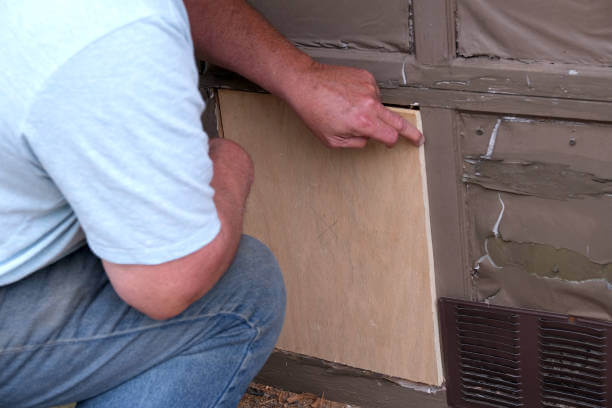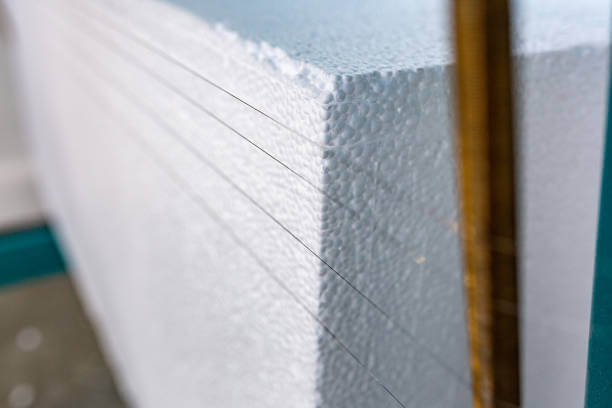- Home
- Are Garage Door Insulation Kits Worth It
- Insulating a Garage Door With Foamboard
insulating a garage door with foamboard-The Ultimate Guide to a Warmer, More Efficient Garage
Are you tired of dealing with fluctuating temperatures in your garage, a heat loss issue that affects the rest of your home, or struggling to make your workspace comfortable during colder months? Insulating your garage door with foamboard could be the cost-effective and eco-friendly solution you’ve been searching for! Foamboard insulation is not only energy-efficient but also provides excellent thermal insulation and soundproofing.
In this blog post, we will guide you through the benefits of insulating a garage door with foamboard, how to do it yourself, and tips for achieving optimal results. So grab your tools and let's get started on transforming your garage into a cozy and inviting space.
Why Insulate Your Garage Door With Foamboard?

Insulating your garage door with foam board provides multiple benefits, including energy efficiency, thermal heat reduction, and winter insulation.
Benefits Of Insulating with foamboard
One of the primary benefits of insulating your garage door with foamboard is energy efficiency. By preventing heat loss, you can effectively lower your heating expenses during cold months and maintain more comfortable temperatures in rooms above the garage. Additionally, well-insulated doors can help keep your garage cooler in summer, reducing cooling costs for adjacent living spaces.
Insulating a garage door not only enhances energy efficiency but also improves soundproofing and moisture resistance. A well-insulated door can minimize noise pollution from both outside and inside sources, creating a quieter environment for homeowners.
Moreover, using water-resistant insulation materials such as foil-faced foam board will prevent moisture from seeping through the door's joints and edges, protecting it against potential damage caused by condensation or dampness.
Lastly, by choosing eco-friendly insulation options like expanded polystyrene (EPS) foam or polyurethane-based foam boards, you contribute to sustainable home improvement practices.
These materials have excellent R-values and reduce waste production while providing an effective thermal barrier between your garage's interior and exterior environments. By opting for environmentally conscious solutions like these when insulating your garage door with foamboard, you take a step towards greener living without sacrificing performance or functionality.
Types Of Foamboard For Insulating Garage Doors

When it comes to insulating garage doors with foam board, there are three main types of insulation to consider. The first is expanded polystyrene (EPS) foam board, which is lightweight and easy to cut. The second option is extruded polystyrene (XPS) foam board, which provides great insulation value and moisture resistance. Finally, polyurethane (PU) foam board can provide optimal thermal benefits due to its high R-value and pliability.
In addition to the type of foam board chosen for garage door insulation, it's important that the chosen material is fire-rated and foil-faced. This ensures maximum protection and durability in case a fire breaks out in your garage.
Ultimately, the choice between these three types of foamboard will depend on factors such as budget, desired level of insulation performance, ease of installation, and specific needs like water-resistance or soundproofing requirements.
How To Insulate Your Garage Door With Foamboard
To insulate your garage door with foam board, start by measuring and cutting the boards to size using a utility knife or saw, then apply adhesive to the back of each panel before attaching them to the garage door. Be sure to seal any edges and gaps with tape or caulking for maximum insulation efficiency. Want more tips on how to make your garage more energy-efficient? Keep reading!
1. Measuring And Cutting Foam Boards
Proper measurement and cutting of foam boards is crucial for successful garage door insulation. Before starting the process, measure the length and width of each panel on your garage door to determine how much foam board is needed. Once you have the right measurements, use a straight edge and a utility knife to cut through the foam board according to your specifications.
It's important to note that while cutting the foam board, it should be done in a well-ventilated area as insulation materials can produce fine particulate dust that may cause respiratory irritation or other health issues if inhaled. Wearing protective gear such as goggles, gloves, long sleeve shirt and pants are highly recommended during this process - ensuring your health safety.
By carefully measuring and cutting your foam boards, you will achieve optimal energy efficiency benefits from insulating your garage doors with ease!
2. Applying Adhesive And Attaching To Garage Door
To properly insulate your garage door with foam board, you will need to apply adhesive and attach the foam boards to the door. Follow these steps for a successful installation:
1. Choose an appropriate adhesive: Select an adhesive that is compatible with both foam board and your garage door surface. Construction adhesive, like Liquid Nails, works well for attaching foam board insulation.
2. Cut foam boards to size: Use a measuring tape and cutting tool to cut each sheet of foil-faced foam board to the size needed for your garage door.
3. Apply adhesive: Squeeze out a generous amount of construction adhesive onto the back of each foam board sheet.
4. Attach the foam boards: Carefully place each piece of foam boarding onto your garage door surface while pressing it down with even pressure to ensure it sticks securely.
5. Secure edges and gaps: Once all panels are in place, use foil tape or spray-foam insulation around the edges and gaps between them to create an air-tight seal.
By following these steps, you can successfully insulate your garage door with foam board and enjoy a more comfortable home environment while reducing energy costs thanks to its thermal heat reduction benefits.
3. Sealing The Edges And Gaps
After attaching the foam board insulation to your garage door, it is essential to seal the edges and gaps. These areas are particularly vulnerable to air leaks that can affect insulation effectiveness. Use an adhesive sealant or weatherstripping tape to seal all the joints between the panels of the garage door.
Don’t forget about sealing around any additional openings in your garage door, such as windows or handles. Cover them with foam board pieces and secure them with adhesive glue. This step will help prevent air from leaking into your house through these openings.
Properly sealing all edges and gaps ensures maximum energy efficiency for your home and helps maintain a comfortable living environment during extreme temperatures. Remember that proper ventilation is also key to maintaining good indoor air quality while keeping energy costs low.
Are garage door insulation kits worth it?
Tips And Considerations For Insulating Your Garage Door With Foamboard
Consider professional installation for safety and efficiency, select the right adhesive, regularly inspect and maintain your insulation, and ensure proper ventilation to maximize the benefits of insulating your garage door with foam board. Read on for more tips!
Professional Installation
Professional installation is recommended for those who are not confident in their DIY insulation abilities. Here are the reasons why:
1. Professionals have experience with insulation installation and can ensure the foam boards are properly attached.
2. They have access to specialized equipment that can make cutting and fitting foam boards easier.
3. Professional installers can provide recommendations on which type of foam board and adhesive to use based on your specific needs.
4. They can also ensure proper ventilation is established, preventing moisture buildup and ensuring optimal energy efficiency.
5. While professional installation may cost more initially, it can save you money in the long run by reducing energy bills and preventing issues with improper insulation.
Keywords: Professional Installation, Insulation Installation, Foam Boards, Adhesive, Energy Efficiency, Moisture Buildup, Cost-effective insulation.
Safety Considerations
When it comes to insulating your garage door with foam board, safety should be a top priority. It's important to follow all manufacturer instructions carefully and wear protective gear like gloves and goggles when handling materials like adhesive and insulation. Additionally, choosing fire-rated foam board is essential for minimizing any potential fire hazards.
Another safety consideration is ensuring proper ventilation in the garage. Insulation can potentially trap harmful fumes from vehicles or chemicals, leading to indoor air quality issues. Opening windows or installing exhaust fans can help prevent these problems and keep the space safe for everyone who uses it. Remember to always prioritize safety when taking on DIY projects like this one!
Adhesive Selection
When it comes to insulating a garage door with foam board, adhesive selection is crucial. The right adhesive will ensure that the foam boards stay securely attached to the door for years to come. It's important to choose an adhesive that is strong enough to withstand temperature changes and won't break down over time.
One recommended option for adhesive selection when insulating a garage door with foam board is a low-expansion foam sealant. This type of sealant provides excellent adhesion while also expanding slightly, filling in any gaps or small spaces between the foam board and the garage door surface.
Another option is a contact cement specifically designed for use with insulation materials such as polystyrene or polyurethane foam boards. Whichever adhesive you choose, be sure to follow manufacturer instructions carefully for best results.
Regular Inspections And Maintenance
Regular inspections and maintenance are essential for ensuring your garage door insulation remains effective over time. It is recommended you check your foamboard insulation every few months to ensure it is still secure, without any gaps or damage that could compromise its thermal effectiveness. Furthermore, regular cleaning of the garage door's surface prevents dust and debris from accumulating and affecting the adhesive bonding.
To get the best performance out of your foam board insulation, consider professional installation with proper sealing around all edges and seams. Regular visual inspections will help detect wear signs so that you can replace the damaged parts promptly with new insulations as needed.
Overall, properly maintained garage door insulation ensures optimal energy efficiency while reducing heating costs throughout winter nights significantly. So take note always to be on top of regular inspection schedules for great-looking doors while keeping energy bills low at home.
Proper Ventilation
Proper ventilation is an essential consideration when insulating a garage door with foam board. Good ventilation helps to prevent the buildup of moisture in the insulation and reduces the risk of mold growth, which can jeopardize indoor air quality. Additionally, sufficient ventilation allows for proper air circulation and temperature regulation.
One way to ensure adequate ventilation is by installing vents or fans in your garage. Proper installation will allow for proper airflow and help minimize condensation on your garage door during colder weather conditions. This strategy also facilitates higher airflow around your home that could affect efficiency levels positively.
In summary, good ventilation plays an important role in ensuring the effectiveness of insulation efforts while keeping indoor humidity under control. It goes hand-in-hand with insulation materials like vapor barriers, helping block unwanted moisture from infiltrating walls and other areas where it might cause problems later on down the line - such as odors caused by dampness or more significant structural damage over time due to unchecked water infiltration into cracks or behind surfaces!
Conclusion
Insulating your garage door with foam board is a cost-effective and eco-friendly solution for improving energy efficiency in your home. By preventing heat loss and reducing thermal transfer, you can enjoy a more comfortable living space while reducing energy bills.
With the right materials, adhesive selection, and proper installation techniques, this DIY project can be completed easily and effectively. Don't forget to regularly inspect and maintain your insulation for optimal results. So go ahead, start insulating your garage door with foam board today!